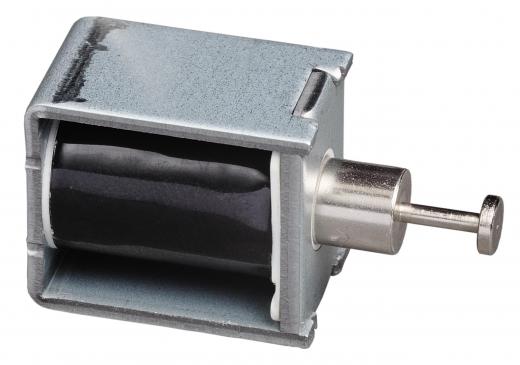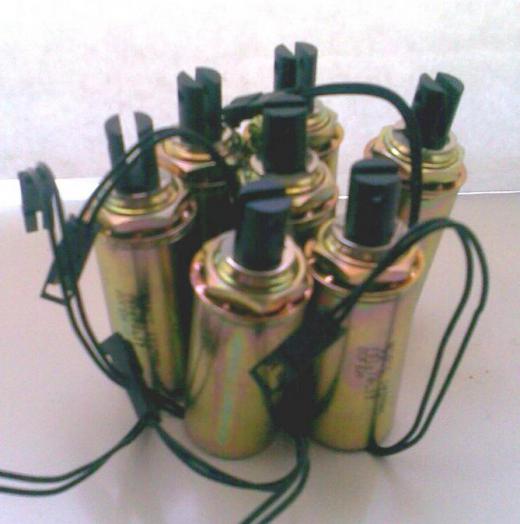A solenoid controller is an electronic device used to activate single or multiple solenoids in a precise, controlled, and programmable way. These controllers are typically presented as sealed, modular units, or open printed circuit boards (PCBs) designed for easy wiring and mounting integration. They are used either as interface units between computerized control systems and the solenoids, or may have programmable features themselves. Many solenoid controllers are also designed to prevent overheating of the solenoid coil during operation. The solenoid controller is most commonly encountered in installations that require large numbers of solenoids to be controlled at precise time intervals, or in response to complex process inputs.
A solenoid is an actuation device that harnesses electromagnetic forces to supply linear motion. They are common system components in a wide range of applications used to switch or control valves, machine functions, and system components. While the electric current used to activate any solenoid may, theoretically at least, be supplied by the most rudimentary of switches, the processes that utilize solenoids often require very precise control. This is particularly true of installations featuring large numbers of solenoids that require activation at very accurate time intervals or in response to complex and demanding process parameters. In these cases, a solenoid controller is generally the preferred control source.

These controllers are available in a range of formats including sealed modular and open PCB units. All are designed to be used as stand-alone devices or in groups as part of modular control systems. Many solenoid controller units are designed to be used in specific applications and will feature connections and mounting facilities designed for those applications. Others are meant for general applications and will have standardized connections and mounting points designed for use on generic rail and stand-off systems.

The solenoid controller is primarily designed to offer a single unit interface between system and operator inputs and the solenoids that they control. They may be no more than simple switching relays, or can be capable of fairly complex, pre-programmed control of elements, such as switching intervals and activation cycle lengths. One of the most valuable of the many solenoid controller benefits is the control of solenoid temperature. This is typically achieved by activating the solenoid with its full-rated voltage to ensure a clean, quick plunger pull-in, then reducing the voltage to a level just high enough to keep the solenoid active. This reduced-holding voltage prevents the coil from overheating, making the entire system more cost effective and prolonging the life of the components.
